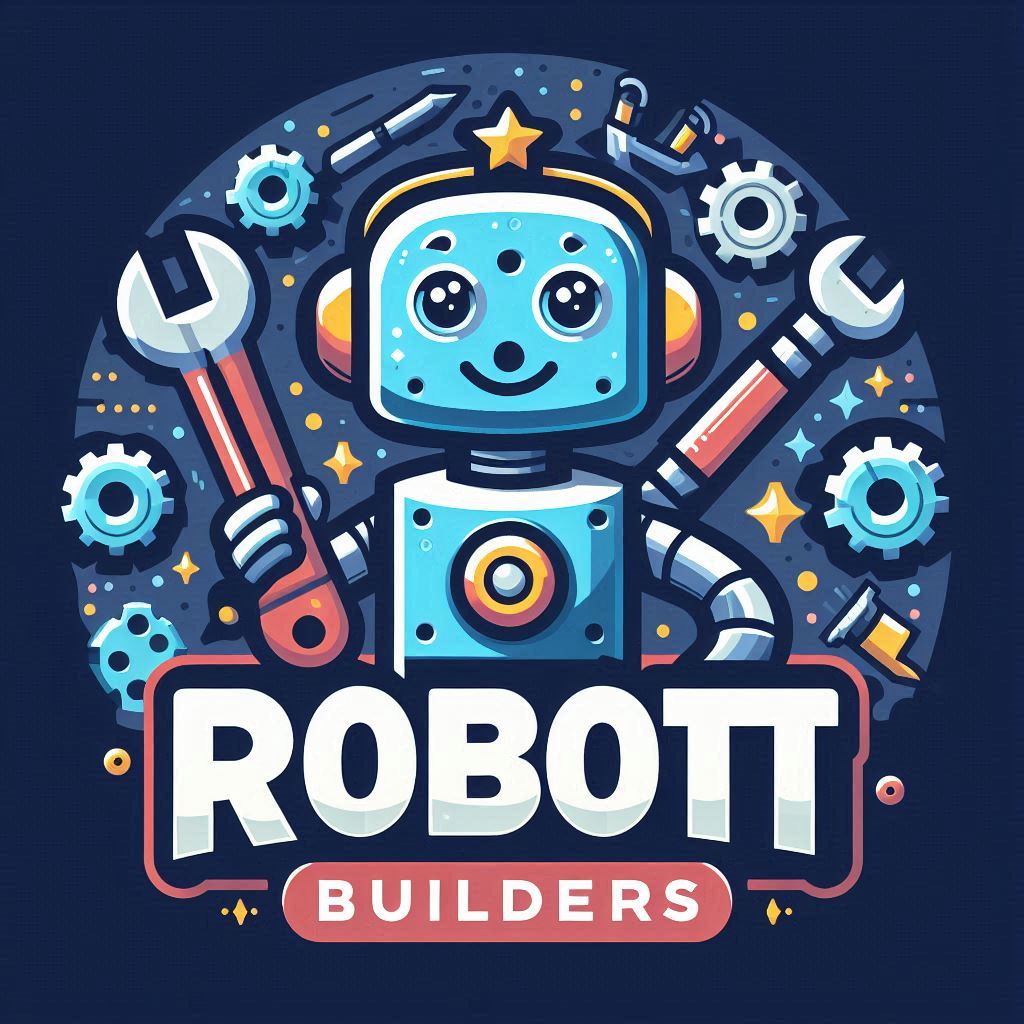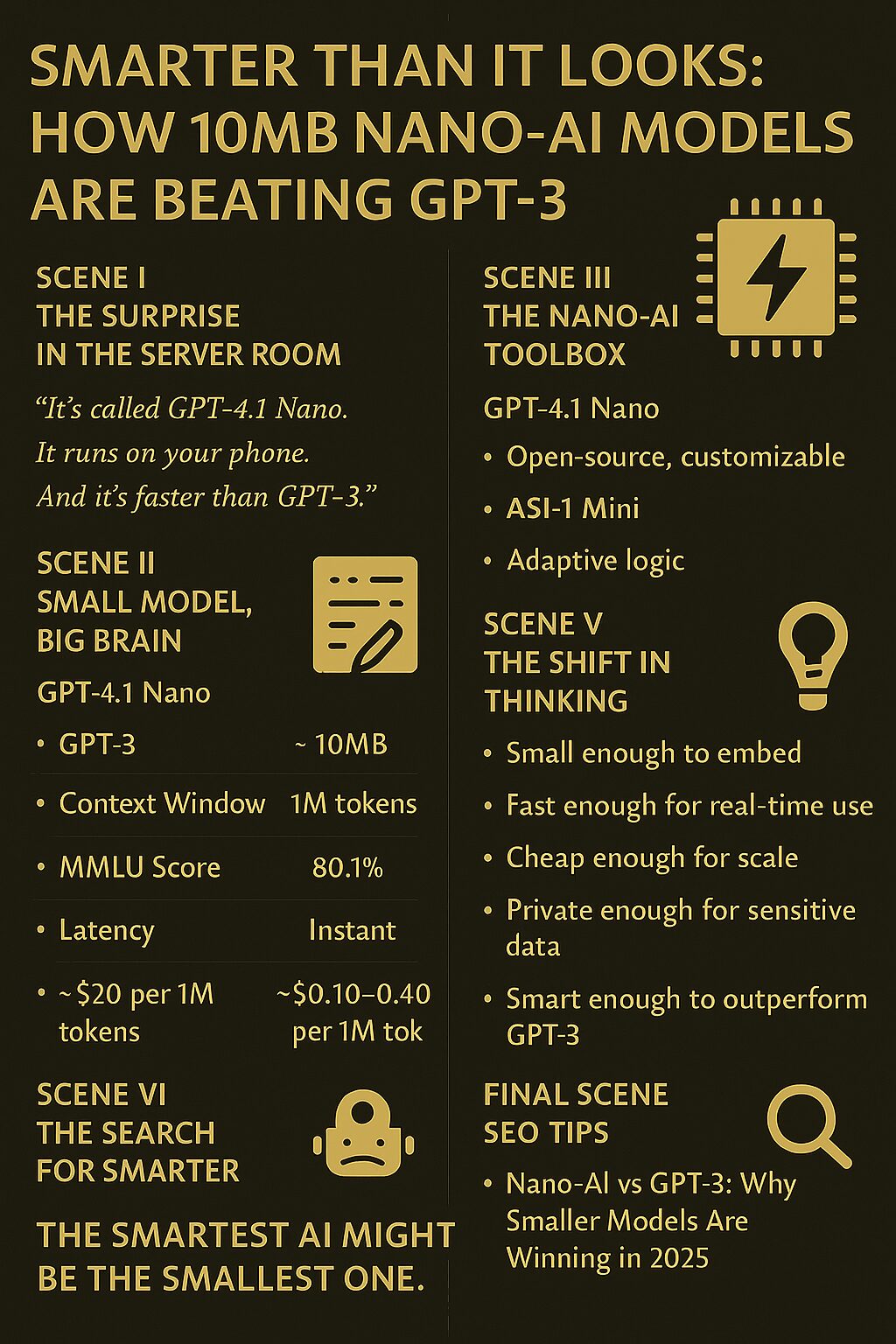Introduction
In 2025, the AI landscape is being reshaped—not by bigger models, but by smaller, smarter ones. The rise of Nano-AI models, some as small as 10MB, is challenging the dominance of legacy giants like GPT-3. These ultra-efficient models are proving that size isn’t everything—and in many cases, they’re outperforming GPT-3 in speed, cost, and task-specific accuracy.
This article explores the Nano-AI revolution, highlights top-performing models, and explains why developers and businesses are embracing compact intelligence.
⚡ What Is Nano-AI?
Nano-AI refers to lightweight language models optimized for performance, speed, and cost-efficiency. These models typically range from 5MB to 50MB, and are designed for:
- Real-time inference
- Edge deployment
- Low-latency tasks like classification, autocomplete, and embedded AI agents
Examples include GPT-4.1 Nano, MiniGPT, and NanoGPT, which deliver impressive results despite their compact size.
🧠 Nano Models vs. GPT-3: Feature Comparison
| Feature | GPT-3 (175B) | GPT-4.1 Nano (10MB) |
|---|---|---|
| Model Size | ~350GB | ~10MB |
| Context Window | 4K tokens | 1M tokens |
| MMLU Score | ~70% | 80.1% |
| GPQA Score | ~40% | 50.3% |
| Latency | High | Ultra-low |
| Cost per 1M Tokens | ~$20 | ~$0.10–$0.40 |
| Deployment | Cloud only | Edge, mobile, cloud |
Nano models are faster, cheaper, and more flexible, making them ideal for embedded systems and high-volume applications.
🔍 Why Nano-AI Is Disrupting the Industry
- 🧩 Efficiency: Small models require less compute, enabling deployment on mobile devices, IoT, and edge servers
- 💸 Affordability: Token costs are up to 100× lower than GPT-3 or GPT-4
- ⚙️ Speed: Instant responses with minimal latency
- 🧠 Surprising Accuracy: Outperform GPT-3 in benchmarks like MMLU and GPQA
- 🔐 Privacy-Friendly: Can run locally without sending data to cloud servers
🚀 Top Nano-AI Models in 2025
1. GPT-4.1 Nano
- Released April 2025 by OpenAI
- 1M token context window
- Scores 80.1% on MMLU, 50.3% on GPQA
- Ideal for classification, autocomplete, and embedded agents
2. NanoGPT (by Andrej Karpathy)
- Lightweight GPT-2-style model
- Open-source and customizable
- Perfect for training on small datasets
3. ASI-1 Mini
- Adaptive reasoning with dynamic modes
- Excels in multi-step logic and decision-making
- Used in mobile apps and real-time analytics
🧪 Use Cases for Nano-AI
| Industry | Nano-AI Application |
|---|---|
| Healthcare | On-device symptom checkers and triage bots |
| Finance | Real-time fraud detection and transaction scoring |
| Retail | Smart kiosks and embedded customer assistants |
| Education | Offline tutoring apps with personalized feedback |
| IoT & Edge Devices | Voice assistants, predictive maintenance, alerts |
📈 SEO Tips for Nano-AI Content Creators
✅ Search-Friendly Titles
- “Nano-AI vs GPT-3: Why Smaller Models Are Winning in 2025”
- “Top 10MB AI Models That Outperform GPT-3”
✅ High-Impact Keywords
- “GPT-4.1 Nano performance benchmarks”
- “NanoGPT vs GPT-3 comparison”
- “Best lightweight AI models for edge deployment”
✅ Metadata Optimization
- Alt Text: “Comparison chart showing Nano-AI models outperforming GPT-3 in speed, cost, and accuracy”
- Tags: #NanoAI #GPT41Nano #LightweightLLMs #AIRevolution2025 #EdgeAIModels
Final Thoughts
The Nano-AI revolution proves that intelligence doesn’t need to be massive. With models like GPT-4.1 Nano outperforming GPT-3 in key benchmarks, the future of AI is not just smarter—it’s smaller, faster, and everywhere.
💬 Want help selecting the right Nano-AI model for your app, device, or business workflow? I’d be happy to guide you—byte by byte.

